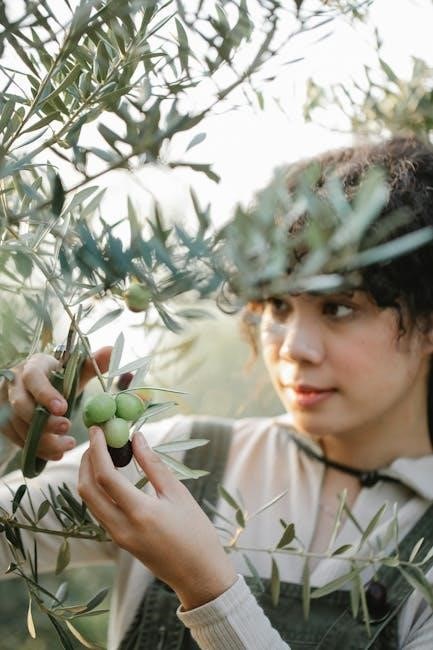The Allegory of the Olive Tree: An In-Depth Analysis
The allegory of the olive tree, found in Jacob 5 of the Book of Mormon, stands as a complex and multifaceted narrative, representing the history and destiny of the House of Israel and God’s unwavering love. The allegory uses symbols like the olive trees, vineyard, and servants to convey profound spiritual truths.
The allegory of the olive tree, a profound and intricate narrative embedded within the Book of Mormon, specifically in the book of Jacob, serves as a powerful testament to God’s unwavering love and intricate plan for His children. Attributed to the prophet Zenos and later expounded upon by Jacob, this allegory employs rich symbolism to illustrate the history, scattering, and gathering of the House of Israel, alongside the inclusion of the Gentiles into God’s covenant.
The allegory’s enduring significance stems from its ability to convey complex theological concepts through relatable imagery. It invites readers to contemplate the nature of divine intervention, the consequences of disobedience, and the transformative power of repentance. The olive tree itself becomes a central metaphor, representing the chosen people of God, while the vineyard symbolizes the world and humanity.
Through careful examination of the allegory’s elements, including the wild and tame olive trees, the Lord of the vineyard, and the diligent servants, we gain a deeper understanding of God’s patient and persistent efforts to cultivate and redeem His creation. The allegory’s message resonates across time, offering hope and guidance to those seeking to connect with the divine and find their place within God’s eternal plan. It emphasizes personal relevance.
The Allegory’s Location in the Book of Mormon: Jacob 5
The allegory of the olive tree is prominently located in Jacob chapter 5 within the Book of Mormon, providing a central teaching moment in the narrative. Jacob, a prophet and brother of Nephi, delivers this elaborate allegory to his people, drawing upon the teachings of Zenos, an earlier prophet whose writings were preserved on the plates of brass. The placement of the allegory at this point in the Book of Mormon is significant.
Jacob uses Zenos’s allegory to address the spiritual state of the Nephites, cautioning them against pride and urging them to remember God’s covenant. It serves as a powerful reminder of the history of the House of Israel, their scattering due to disobedience, and the future promise of their gathering through the atonement of Jesus Christ. By including this extensive allegory, Jacob emphasizes the importance of understanding God’s plan and the role of the Messiah in fulfilling it.
The allegory’s placement also allows Jacob to connect the teachings of Zenos with his own prophetic ministry. The allegory provides a framework for understanding the ongoing spiritual struggles of the Nephites and the challenges they face in maintaining their faith. It underscores the need for constant vigilance and the importance of remaining true to the covenants they have made with God. The chapter acts as the location.
Symbolism of the Tame Olive Tree: The House of Israel
Within the allegory of the olive tree, the tame olive tree serves as a central symbol, representing the House of Israel, God’s covenant people. This symbolism is deeply rooted in ancient Israelite culture, where the olive tree was highly valued for its fruit, oil, and long life. The tame olive tree, carefully cultivated and nurtured, reflects the blessings and responsibilities associated with being chosen by God. It signifies a people who have entered into a covenant relationship with Him, promising obedience and receiving divine guidance and protection in return.

The flourishing and fruitfulness of the tame olive tree represent the times when the House of Israel was righteous and obedient, enjoying the blessings of the Lord. Conversely, the decay and decline of the tame olive tree symbolize periods of apostasy and disobedience, leading to scattering and suffering. The allegory emphasizes that the condition of the tame olive tree is directly linked to the faithfulness of the House of Israel in keeping their covenants. The tree represents the Israelites.
The repeated efforts of the Lord of the Vineyard to preserve and revive the tame olive tree demonstrate His unwavering love and commitment to His covenant people. Even when the tree is in decline, He tirelessly labors to prune, nourish, and graft, seeking to restore its vitality and fruitfulness. This symbolizes God’s persistent mercy and His desire to gather and redeem the House of Israel, despite their imperfections and failings. It demonstrates the love and dedication of God.
Symbolism of the Wild Olive Trees: Non-Israelites/Gentiles
In contrast to the tame olive tree, the wild olive trees in Jacob 5 represent the non-Israelites, or Gentiles. These trees, not originally part of the covenant lineage, symbolize those who have not yet entered into a formal relationship with God through the Abrahamic covenant. The wild olive tree is often viewed as less desirable, producing bitter or inferior fruit, which symbolizes the spiritual state of those who are not part of the covenant community. It illustrates their need for the blessings of the gospel.
However, the allegory emphasizes that the wild olive trees are not inherently worthless. The Lord of the Vineyard, in His infinite mercy, commands His servants to graft branches from the wild olive trees into the tame olive tree. This grafting symbolizes the process of conversion and inclusion, whereby Gentiles are brought into the fold of Israel and become partakers of the blessings of the covenant. It signifies that all people, regardless of their background or lineage, can have access to God’s grace and salvation through faith in Jesus Christ.
The grafting of wild olive branches also represents the sharing of the gospel with the Gentiles, inviting them to come unto Christ and become fellow citizens with the saints. It highlights the universal scope of God’s plan of redemption, which extends to all nations, kindreds, tongues, and people. The allegory demonstrates that God loves all His children and desires that all may come to know Him and receive eternal life, as wild branches are grafted into the tree.
The Vineyard: The World
Within the allegory of the olive tree, the vineyard serves as a powerful symbol representing the world. This world, with all its inhabitants and complexities, is the setting for the unfolding drama of salvation. It is the place where the Lord of the Vineyard cultivates and cares for His olive trees, representing humankind. The vineyard is not merely a passive backdrop; it is an active environment where growth, decay, and transformation take place;
The vineyard symbolizes the sphere of mortal existence, a testing ground where individuals are given the opportunity to choose between good and evil, to accept or reject God’s invitation to salvation. It is a place of both beauty and hardship, where the olive trees face challenges such as poor soil, neglect, and the encroachment of wild growth. These challenges represent the trials and temptations that individuals face in their earthly journey. The world, like a vineyard, requires constant attention and labor to yield its fruit, representing the effort and dedication required to cultivate righteousness.
The Lord of the Vineyard’s constant labor in the vineyard highlights God’s ongoing involvement in the affairs of the world. He sends His servants to prune, dig about, and nourish the trees, symbolizing the ministry of prophets and other laborers who strive to bring souls unto Christ. The vineyard reminds us that the world is not abandoned or forgotten by God, but that He actively works to bring about His eternal purposes.
The Lord of the Vineyard: God’s Tender Devotion
The figure of the Lord of the Vineyard is central to understanding the allegory, representing God Himself and His profound love and care for His creations. The Lord’s actions throughout the allegory reveal His tender devotion and unwavering commitment to the salvation of His children. He is not a distant or indifferent observer but an active participant in the vineyard’s well-being, constantly laboring to ensure its fruitfulness.

The Lord’s repeated visits to the vineyard demonstrate His persistent concern for the olive trees, symbolizing His continuous engagement with humankind. He is deeply invested in their growth and development, taking personal interest in their condition. The Lord’s willingness to prune, dig about, and nourish the trees illustrates His proactive approach to nurturing His children, providing them with the necessary support and guidance to overcome challenges.
His interactions with the servants reveal His collaborative approach to salvation, delegating responsibility and working in partnership with those who are willing to assist in His divine work. The Lord’s sorrow at the decay of the trees emphasizes His emotional connection to His creations, highlighting His deep disappointment when they stray from the path of righteousness. Ultimately, the Lord of the Vineyard embodies God’s infinite love, mercy, and unwavering dedication to the eternal welfare of His children.
The Servants: Prophets and Laborers
In the allegory of the olive tree, the servants play a crucial role, representing prophets and other individuals who labor in God’s service to assist in the salvation of souls. These servants are entrusted with the responsibility of caring for the vineyard, which symbolizes the world, and nurturing the olive trees, representing the House of Israel and all of God’s covenant people. Their efforts are essential to the Lord’s plan, as they work diligently to prune, graft, and nourish the trees, ensuring their fruitfulness.
The servants’ obedience and dedication to the Lord of the Vineyard demonstrate the importance of heeding prophetic counsel and actively participating in God’s work. They follow the Lord’s instructions, even when the task seems challenging or the outcome uncertain. Their willingness to labor alongside the Lord highlights the collaborative nature of salvation, where individuals can contribute their talents and efforts to bring about God’s purposes.
The allegory emphasizes the importance of unity and cooperation among the servants, as they work together to achieve a common goal. Their combined efforts amplify the impact of their individual contributions, demonstrating the power of collective action in advancing God’s kingdom. The servants’ faithfulness and perseverance serve as an example for all who seek to serve God and contribute to the well-being of humanity, reminding us that our efforts, however small, can make a significant difference in the lives of others.
Grafting: Coming to the Knowledge of the Messiah

In the allegory of the olive tree, grafting represents the process of individuals coming to the knowledge of the Messiah, Jesus Christ, and being incorporated into the covenant people of God. This act of grafting involves taking branches from one tree and inserting them into another, symbolizing the integration of those who were once separated from God’s chosen people into the family of faith. The wild olive branches, representing non-Israelites or Gentiles, are grafted into the tame olive tree, which symbolizes the House of Israel.
This grafting process signifies the acceptance of Jesus Christ as the Savior and Redeemer, and the willingness to abide by His teachings and commandments. As individuals embrace the gospel, they are spiritually grafted into the covenant, becoming partakers of the blessings and promises offered through the Messiah. This act of grafting demonstrates God’s love and mercy, extending salvation to all who will come unto Him, regardless of their background or lineage.
Through grafting, individuals gain access to the nourishing sap of the tame olive tree, which represents the spiritual sustenance and guidance provided by the Holy Spirit. This spiritual nourishment strengthens their faith, deepens their understanding of God’s plan, and empowers them to live a life of righteousness. The grafting process emphasizes the transformative power of the gospel, as individuals are changed and renewed through their connection with the Messiah, becoming new creatures in Christ.
Decay of the Tame Tree: Apostasy from the Gospel
The decay of the tame olive tree in Jacob 5 vividly portrays the concept of apostasy, or the falling away from the true gospel of Jesus Christ. This decline signifies a departure from the original teachings, principles, and practices established by the Savior and His apostles. As the tame tree weakens and its fruit becomes corrupt, it symbolizes the spiritual deterioration that occurs when individuals and societies turn away from God’s commandments and embrace worldly philosophies.
This decay represents a loss of faith, a diminishing of spiritual understanding, and a decline in moral values. As the branches of the tame tree wither, it signifies the scattering of God’s chosen people and their separation from His divine guidance. The decay of the tame tree serves as a warning against complacency and spiritual neglect, reminding us of the importance of continually nourishing our faith and remaining true to the principles of the gospel.
The allegory highlights the consequences of apostasy, as the tree becomes unproductive and unable to fulfill its intended purpose. This symbolizes the spiritual emptiness and lack of fulfillment that result from turning away from God. However, even in the midst of decay, there is hope for restoration, as the Lord of the vineyard diligently labors to preserve and revive the tree, demonstrating His unwavering love and mercy towards His children.
Fruit of the Tree: Souls of Men
Within the intricate symbolism of the allegory, the fruit borne by the olive trees represents the souls of men. The quality of the fruit, whether good or bad, reflects the spiritual condition and actions of individuals. Good fruit signifies those who have embraced the gospel, lived righteously, and cultivated a close relationship with God. These individuals bear the fruits of the Spirit, such as love, joy, peace, and long-suffering, enriching their own lives and the lives of those around them.
Conversely, bad fruit symbolizes those who have strayed from the path of righteousness, succumbed to temptation, and neglected their spiritual growth. Their actions and choices produce negative consequences, leading to unhappiness, discord, and separation from God. The allegory emphasizes the importance of nurturing our spiritual lives and striving to produce good fruit, as this ultimately determines our eternal destiny.

The Lord of the vineyard is deeply concerned with the quality of the fruit, as it represents the potential for eternal joy and salvation. He labors diligently to cultivate the trees, prune away the bad fruit, and graft in new branches, all in an effort to bring forth a harvest of righteous souls. This underscores the divine love and mercy extended to all mankind, offering opportunities for repentance, growth, and the attainment of eternal life.
Application of the Allegory: Personal Relevance
The allegory of the olive tree, while rich in historical and symbolic meaning, holds profound personal relevance for each of us. We can see ourselves within the various elements of the allegory, recognizing our own potential for growth, our struggles with temptation, and the boundless love and mercy offered by God.
Each individual can be likened to a branch on the olive tree, with the capacity to bear good fruit through righteous living and devotion to God. The challenges and trials we face can be seen as opportunities for pruning and refinement, allowing us to shed negative influences and cultivate positive attributes. The act of grafting represents our willingness to embrace the teachings of Christ and become part of His covenant people.
By studying and internalizing the lessons of the allegory, we can gain a deeper understanding of our own spiritual journey and the path that leads to eternal life. We can recognize the importance of nurturing our relationship with God, striving to overcome our weaknesses, and bearing fruit that is pleasing to Him. The allegory serves as a powerful reminder of the divine potential within each of us and the transformative power of faith and obedience.